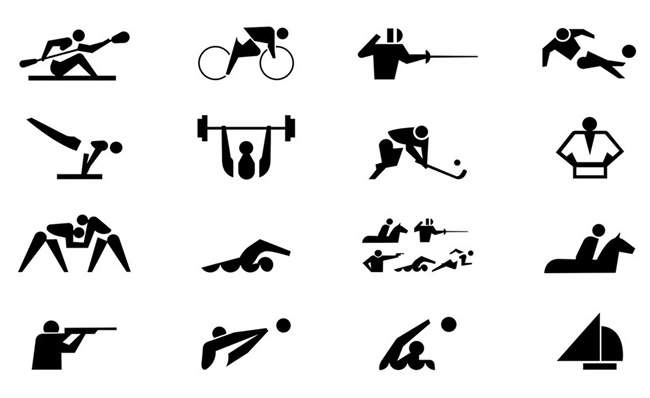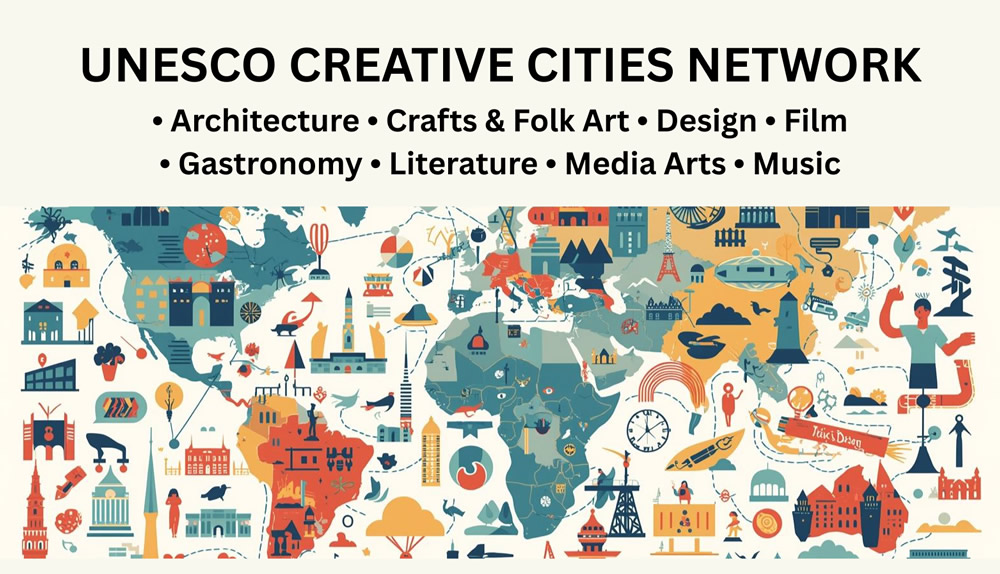« Universities should become thought leaders in finding solutions to global challenges, says Vice President of India | Main | 70th Miss Universe Competition will Air Live from Eilat, Israel, in December 2021 on FOX. »
July 22, 2021
Olympic Pictograms — TOKYO 1964 to TOKYO 2020

Photo: Pictograms at the Tokyo 1964. Image provided by & Copyright © International Olympic Committee 2021.

Photo: Kota Iguchi and Katsumi Masaru. Images provided by & Copyright © International Olympic Committee 2021.
Tokyo, July 20, 2021 - The invention of pictograms at the Tokyo 1964 Games heralded a significant change in graphic design. The creator of Tokyo 2020’s kinetic pictograms is hoping for something similar.
The links tying the historic Olympic Games Tokyo 1964 to their modern 2020 counterpart are everywhere, and none more so than through the two sets of instantly recognizable pictograms. These tiny, invaluable graphics made their worldwide debut 57 years ago in the Japanese capital, and it’s no surprise that the two people tasked with designing the modern versions cast their eyes back towards their forefathers.
“I have worked on this project as if I had received a baton to inherit our tradition and pass on to the next generation,” said Kota Iguchi, designer of the kinetic pictograms, which will add a 21st-century twist to the genre.
Tokyo 1964 organizers invented the pictograms under the watch of Tokyo 1964 artistic director Katsumi Masaru. They were a non-verbal means of communicating to the mass of foreigners that arrived in Japan for the nation’s first Olympic Games.
It was a masterstroke. All the following Olympic Games, all over the world, have used the concept.
Iguchi, a motion graphics specialist, has been as much in love with the designs as anyone. “Static sports pictograms were first introduced at the Tokyo 1964 Games and created from the idea of communicating through emojis instead of an alphabet,” Iguchi explained. “I can empathize with this type of idea as it is a typically Japanese way of thinking.”
“And when I applied the idea to today’s world, I thought the idea of kinetic pictograms was a natural process.”
To get the pictograms moving, Iguchi needed a 2020 static design upon which to work. Up stepped local designer Masaaki Hiromura. He, too, had no intention of straying far from the example set back in 1964.
“I sensed not only simplicity but also a glorification of each sport and the genuine enjoyment of sport in the design. I found that Japanese simplicity and minimalism had an affinity with my design, and I wanted to inherit that philosophy,” Hiromura confirmed.
“Like the 1964 designs, we too ended up with the idea of creating a design to let people feel a pure joy of sport and the excitement of competition, rather than just making it look neat and tidy.”
The critical requirement for Hiromura was maintaining a single concept that people of all ages and nationalities can understand.
Pictograms changed little in design from 1964 until the 1990s, when a semblance of national identity started to creep in. First in Lillehammer in 1994 came a plan based on the famous 4,000 years old rock carvings of a skier found in Norway. Next, a boomerang influenced pictograms at the Olympic Games in Sydney in 2000. Finally, the Athens 2004 versions incorporated the feel of the ancient Olympic Games. Then, by Turin 2006 and Vancouver 2010, there were 3D designs.
It is perhaps no surprise that working on the back of all this history, Iguchi took his time to ensure his contribution would be the right one.
“The first thing I did was to give movement to the track and field pictogram,” he said. “I created more than 50 prototypes, and I suggested in a pattern of movement (that the) static pictogram ‘appears’ and ‘disappears.’
“From there, I watched a lot of videos of sports competitions and studied the movements of various athletes to recreate such moves. Next, professionals in each sport category scrutinized my works. Then, I made adjustments to every tiny detail of movement. Finally, it took more than a year for me to complete all the 73 kinetic pictograms by myself.”
Such a labor of love seems well worth it, especially when Iguchi considers the impact his work may make, like that of his compatriots before him.
“I hope that kinetic pictograms will be created again by the local people in the next Summer Games in Paris and the LA Games in 2028 and beyond,” Iguchi said, before adding: “The local creator already created the kinetic pictogram for the Beijing 2022 Winter Games.
“If people all over the world continue to pass the baton to others like this, this new challenge that Japan initiated in 2020 will be inherited forever. It’s fun to imagine whether the Paris pictogram moves will emphasize the city’s beauty, as Paris always does, or whether Los Angeles will create something quite entertaining like our public image of America. I’m excited to know.”
Source: International Olympic Committee
|GlobalGiants.Com|
The Tokyo 2020 Kinetic Sports Pictograms







Edited & Posted by the Editor | 3:34 AM | Link to this Post







